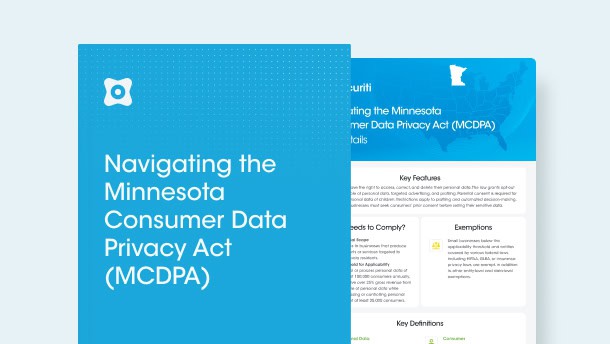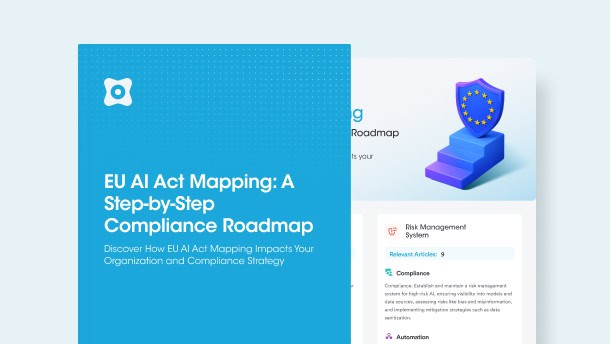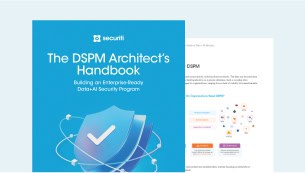In today’s data-hungry world, data is distributed across on-premises, cloud environments, networks, systems, and geographies. According to the latest estimates, around 402.74 million terabytes of data are produced each day.
A lack of data classification leads to limited or no insight around data, and terabytes of data stored within organizations and data systems leave enterprises struggling to harness data’s actual potential. That’s where AI-powered data mapping comes in.
What is AI Data Mapping?
AI data mapping is the process of employing artificial intelligence and machine learning to automatically construct mappings between one data source and other relevant data fields. The application of AI optimizes the overall data mapping process by removing inefficiencies during data extraction and mapping, since AI understands the context to precisely map the data, ensuring correctness and consistency.
For example: An organization is moving thousands of customer names and email addresses from a traditional system to a modern data management system. The new system might employ fields that aren’t consistent with the existing system. For instance, the new system may feature a field that reads "Full Name" instead of "Name" or "Email Address" instead of just "Email."
The Core Data Mapping Challenge
Legacy models and conventional data mapping processes are time-consuming, error-prone, and typically inadequate in handling the hyper complexity and scalability necessary in most modern organizational data ecosystems.
Additionally, with a hypervolume data landscape and an exponential quantity of data sprawl, enterprises struggle to maintain data quality.
AI-driven data mapping revolutionizes the entire data mapping process by combining machine learning and natural language processing to automatically enhance and unify dispersed data from diverse sources. It helps enterprises to have accurate analytics, improved visibility of data assets, and the capacity to make educated decisions in real-time.
Traditional Data Mapping vs. AI-Driven Data Mapping
As data volumes rise across regions, so does the need to map data for greater data integration with varied networks and systems, and to ensure accurate data warehousing. Here’s a contrast of traditional data mapping approaches vs an AI-driven approach:
Aspect
|
Traditional Data Mapping
|
AI-Driven Data Mapping
|
| Approach |
Manual – requires many individuals to work on multiple data sets |
Automated using machine learning & natural language processing |
| Setup Time |
Time-consuming; takes an ample amount of time and manual resources |
Faster; AI can auto-detect field matches |
| Scalability |
Hard to scale with large or complex datasets |
Easily scales with data volume and data types |
| Accuracy |
Depends on human input; prone to human error |
Learns from data patterns; minimizes errors over time |
| Context Understanding |
Limited to field names and predefined rules |
Understands field meanings, synonyms, and contextual connections |
| Adaptability |
Requires rework for changes in source/target data |
Adapts dynamically with learning algorithms |
| Resource Requirements |
Requires the employment of highly skilled data engineers |
Reduces the need of human resources and requires basic AI setup/training |
| Error Detection |
Often reactive (typically discovered during QA) |
Proactive anomaly detection and validation |
| Cost Over Time |
High due to the employment of manual resources and constant maintenance |
Lower over time owing to automation and reusability |
| Best For |
Simple, static, or small-scale data projects |
Complex, large-scale, or evolving data ecosystems |
How Does AI Enhance Data Mapping?
The function of AI is pervasive throughout sectors and processes, and data mapping is no different. Here are the many ways AI assists with data mapping:
Automates Data Integration
AI minimizes the need for human mapping efforts by automating the integration of data (schema matching) from many sources. This assists in assuring consistency and coherence throughout the dataset as well as detecting and linking data from diverse databases, applications, and systems.
Leverages Natural Language Processing
AI leverages NLP to better understand and interpret metadata, labels, and documentation, enhancing context-aware mappings.
Improves Accuracy
AI systems, particularly those that employ machine learning and natural language processing (NLP), increase data mapping accuracy by discovering patterns, correlations, and anomalies that human analysts might ignore. As a consequence, data mappings become more accurate and reliable.
Speed and Efficiency
AI speeds the data mapping process. It speeds up decision-making and implementation by minimizing the amount of time needed to map massive amounts of data by automating repetitive and time-consuming activities.
Scalability
Data mapping processes driven by AI rapidly expand to manage an increasing amount of data and complexity. For organizations working with big data and rapidly increasing data sources, this scalability is vital to managing massive amounts of data.
Handling Complex Data Structures
AI organizes and maps complicated data structures, such as hierarchical and unstructured data. Compared to previous approaches, it can map and comprehend diverse data types more effectively.
Continuous Learning and Adaptation
Over time, machine learning models enhance the mapping process by constantly learning from and adapting to new data. This indicates that the system becomes more accurate and effective the more data it processes.
Semantic Understanding
AI can quickly comprehend the semantic meaning of data items, resulting in more accurate and meaningful mappings in their context. This is especially important for organizations with extensive data standards and language.
Enhanced Data Governance
AI greatly contributes to ensuring data governance by verifying that data mappings meet corporate rules and legal standards as stipulated under legislation. It may also monitor data lineage and ensure that data handling practices conform to the evolving data privacy regulatory landscape.
Optimize Your Data Mapping with Securiti
Securiti is the industry leader in the field of data security, privacy, and governance automation.
Securiti’s Data Command Center leverages contextual data intelligence and automation to unify data controls across security, privacy, compliance, and governance through a single, fully integrated platform. Securiti data mapping automation helps organizations automate the process, which is crucial for compliance with data protection regulations such as GDPR, CCPA, and others.
With Securiti Data Mapping Automation, organizations gain comprehensive data discovery, the ability to monitor data risk effectively, catalog all data assets, visualize global data maps, automate risk assessments, initiate privacy and data protection impact assessments, ensure regulatory compliance, collaborate with stakeholders in real-time, etc.
The process begins with efficiently collecting data on assets and processes, either by importing from existing databases or through a user-friendly portal for stakeholders. A central data catalog allows users to initiate privacy impact assessments and generate records of processing activities as required by privacy regulations. Visual data maps highlight cross-border transfers and other significant flows or risks, dynamically updating as data mapping automation discovers changes in data types, volumes, subject residency, and access rights.
This automation keeps risk assessments current and facilitates the identification and rightful linking of personal data across numerous data stores, creating comprehensive people data graphs. Securiti’s AI-powered PrivacyOps solution fully automates DSR fulfillment and other privacy compliance functions, enabling a smooth transition from manual processes, reducing costs, and mitigating liabilities.
Request a demo to witness Securiti in action.






































